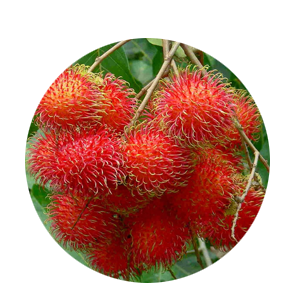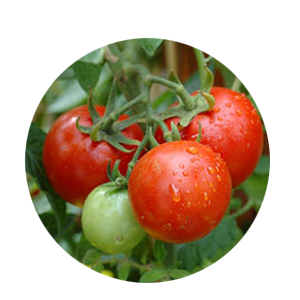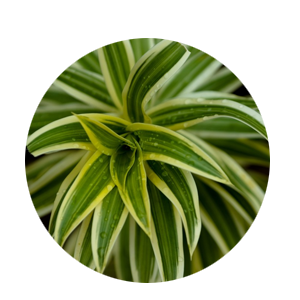Bread Fruit / Kadachakka - Budded - (8x10 bag)

Item Description
GENERAL INFORMATION ABOUT A BREADFRUIT TREE Breadfruit (Artocarpus altilis) is a species of flowering tree in the mulberry and jackfruit family originating in the South Pacific and that was eventually spread to the rest of Oceania. An evergreen tree (12-15 m up to 21 m), breadfruit tends to have a denser, more spreading canopy than breadnut. Leaves (15-60 cm or longer) are almost entire to deeply dissected with 1-6 pairs of lobes. Fruit (10-30 cm long × 9-20 cm wide) vary in shape, size, and skin texture. They are usually round, oval or oblong weighing 0.25-6 kg. Skin texture ranges from smooth to rough to spiny Breadfruit are very rich in starch, which transforms to sugars when very ripe. Before being eaten, the fruits are roasted, baked, fried or boiled. When cooked, the taste of moderately ripe breadfruit is described as potato-like, or similar to freshly baked bread. HEALTH BENEFITS OF BREADFRUIT Breadfruit is high in carbohydrates and a good source of antioxidants, calcium, carotenoids, copper, dietary fiber, energy, iron, magnesium, niacin, omega 3, omega 6, phosphorus, potassium, protein, thiamine, vitamin A and vitamin C. breadfruit is a highly sought after fruit due to its medicinal properties. Some of its health benefits include 1.Cardiovascular health 2.Resistance against infections 3.Source of Energy 4.Diabetes 5.Aids digestion 6.Omega 3 and 6 fatty acids 7.Dental health 8.Prevents Excessive Skin Inflammation 9.Collagen Production 10.Encourages New Cell Growth 11.Cures Skin Infections 12.Treats Skin Diseases 13.Nourishes Hair 14.Treats Dandruff, Itchiness & Hair Breakage 15.Promotes Hair Growth
Maintanance, Disease Management And Yielding
MAINTANACE OF THE PLANTATION Once a plantation has been established, the work should not be considered finished. It will be necessary, for example, to protect the plantation against weather, fire, insects and fungi, and animals. A variety of cultural treatments also may be required to meet the purpose of the plantation. FERTILIZING There is no exclusive fertilizer recommendation for bread fruit. Organic manure @ 25 kg/tree can be applied. Depending upon the age of the plant, NPK mixture (7:10:5) @1- 2kg/plant can be applied. WATERING AND WEED CONTROL Young fig trees should be watered regularly until fully established. In dry western climates, water mature trees deeply at least every one or two weeks. Desert gardeners may have to water more frequently. Mulch the soil around the trees to conserve moisture. Weeding is also very important. Remove all weeds 1.5 meter around the plant. WATERING AND WEED CONTROL Young breadfruit trees should be watered regularly until fully established. In dry western climates, water mature trees deeply at least every one or two weeks. Desert gardeners may have to water more frequently. Mulch the soil around the trees to conserve moisture. Weeding is also very important. Remove all weeds 1.5 meter around the plant. PRUNING AND SHAPE OF TREE Breadfruits are pruned annually. Pruning breadfruit annually will help keep the trees in the proper shape and good harvesting height, along with encouraging vigorous growth. If you would like shorter, more “bushy†trees with lateral branching, you could begin pruning earlier. Trim the main leader and other branch tips once the trees have reached 5-6 feet (1.5-2 meters) to encourage lateral branching. As with other nursery crops, regular pruning allows a grower to shape the plant to an optimal commercial height that will promote healthy growth as well as facilitate easy harvesting. Prune and fertilize after a major harvest to avoid a delay in fruiting. PEST & DISEASE BREADFRUIT TREES Every fruit tree has the future potential for disease and insect damage. Factors such as location and weather will play a part in which issues your tree encounters. If available, disease-resistant trees are the best option for easy care; and for all trees, proper maintenance (such as watering, fertilizing, pruning, spraying, weeding, and fall cleanup) can help keep most insects and diseases at bay. HARVESTING YOUR BREADFRUIT The fruits are harvested 60-90 days after emergence of inflorescence. Fruits are available during February-March and June-August. A fully grown tree can yield about 500-2,000 fruits, weighing 1-4 kg each.
- Propogation Method : Budding
- Plant Climate : Sub Tropical, Normal, Hot, Cool, Tropical
- Plant Height : 1-2 feet
- Plant Weight : 3.5kg
- Plant Polybagsize : 8x10
Related Images
- Botanical Name : Artocarpus Altilis
- Malayalam Name : Kadachakka
- English Name : Bread Fruit
The breadfruit is a remarkable food: The prickly football-size pod is full of nutrients and energy
Planting Instructions
PLANT THE RIGHT TREE AT RIGHT PLACE Growing space both above and below ground should be considered when selecting a tree to plant. Too often allowances are not made for the increased size of the tree when it matures. Most problems can be avoided by selecting the proper tree species for the available planting space. GENERAL TIPS 1.Plant at least 3 meter from main overhead utility wires on street or to your home. 2.Plant at least 3 meter from a building. 3.Plant at least 1 meter from sidewalks, driveways, patios and fences. 4.Plant at least 6 meter from other large trees. 5.Plant at least 3 meter from small trees. 6.Prioritize your tree planting with the sun’s direction to maximize shade by planting on the southwestern and western sides of your home BASIC PARAMETERS TO PLANT A BREADFRUIT TREE 1. Soil : A well draining soil is of primary importance as Breadfruit Trees roots do not like to be wet and will rot if allowed to sit in water for extended periods. A mixture of soil, sand and perlite is highly recommended for proper drainage. . 2. Planting Distance : For Commercial Plantation :- Space your new breadfruit trees 15 to 20 feet apart when planting. If the trees are too close together, fruit production will be low to none. For Home Garden: -In a home garden generally we are planting one or two breadfruit trees along with other species of fruit plants. So it is better to keep minimum 12 meter distance from other plants to plant a breadfruit tree. 3. Pit size : Minimum 60cm width X 60cm Breadth X 60cm depth 4. Sunlight : 100% sunlight is best but can grow up to 50 % shade 5. Watering: During dry weather, initially water the plant once in two days and after one month of planting water every 7 to 10 days during the first year. TEN TIPS FOR PLANTING A BREADFRUIT TREE 1. Dig a hole/pit 3 to 4 times wider than the container (Normally 60cm X 60cm X 60cm is recommended). Fill the pit with top fertile soil to allow for proper root growth. Avoid clay type soil to refill the pit. 2. Add 250 gm Rock Phosphate or Born Meal and 3 to 5 kg Cow dung or compost in the top soil of the pit and mix it thoroughly (Thorough mixing of manure with soil is very important because direct contact of manure with the roots of the plant will cause the damage of roots and plant). 3. Make a small hole in the pit and carefully remove the plant from the container/pot or poly bag keeping the soil around the roots intact. Don‘t yank the plant out of the pot or poly bag as this can separate the roots from the tree. Poly bags can be easily removed by cutting it by a knife and pots can be removed easily by hitting slightly at the top edge of the pot. 4. Set the plant in the middle of the hole. Avoid planting the tree too deep. Keep the base of the trunk is slightly above ground level. Using some soil, secure the tree in a straight position, then fill and firmly pack the hole with the original soil, making sure there aren‘t any air pockets. 5. If the plant is Grafted or Budded make sure the grafted or budded portion of the plant is above the soil. Do not allow to touch the grafted or budded portion in the soil as it burns the skin of the plant. 6. Create a water-holding basin around the pit and give the plant a good watering. After the water has soaked in, spread protective mulch 2–4 inches deep in a 3-foot diameter area around the base of the tree, but not touching the trunk. Also provide a stitch as a support for the plant, if needed. 7. The soil and mulch around your plant should be kept moist but not soggy. During dry weather, initially water the plant once in two days and after one month of planting water every 7 to 10 days during the first year. 8. Remove any tags and labels from the tree as these will affect the tree as it grows. You may need to prune any broken or dead branches. For Budded or Grafted plants it is very important that do not allow the growth of off shoots under the grafted/budded portion. Allow the growth of budded/grafted scions only. 9. Do not use chemical fertilizer or any other chemicals on your newly planted trees. Such products will kill your young trees. If needed you can add chemical fertilizers in small quantity (generally below 100gm) after two to three months of planting with sufficient irrigation. 10. Do not over water or allow rain water so much that you see standing water in the pit area of the plant. It will damage the plants roots and results the die of your plant.















